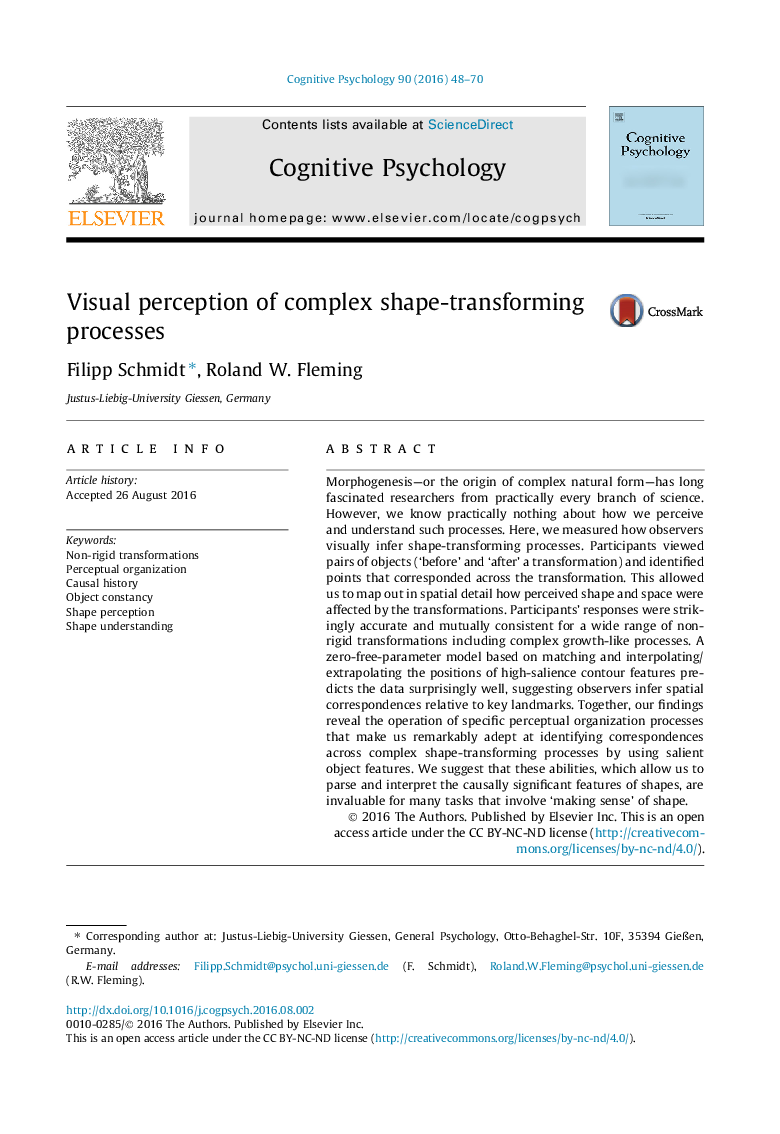| Article ID | Journal | Published Year | Pages | File Type |
|---|---|---|---|---|
| 7272694 | Cognitive Psychology | 2016 | 23 Pages |
Abstract
Morphogenesis-or the origin of complex natural form-has long fascinated researchers from practically every branch of science. However, we know practically nothing about how we perceive and understand such processes. Here, we measured how observers visually infer shape-transforming processes. Participants viewed pairs of objects ('before' and 'after' a transformation) and identified points that corresponded across the transformation. This allowed us to map out in spatial detail how perceived shape and space were affected by the transformations. Participants' responses were strikingly accurate and mutually consistent for a wide range of non-rigid transformations including complex growth-like processes. A zero-free-parameter model based on matching and interpolating/extrapolating the positions of high-salience contour features predicts the data surprisingly well, suggesting observers infer spatial correspondences relative to key landmarks. Together, our findings reveal the operation of specific perceptual organization processes that make us remarkably adept at identifying correspondences across complex shape-transforming processes by using salient object features. We suggest that these abilities, which allow us to parse and interpret the causally significant features of shapes, are invaluable for many tasks that involve 'making sense' of shape.
Related Topics
Life Sciences
Neuroscience
Cognitive Neuroscience
Authors
Filipp Schmidt, Roland W. Fleming,
